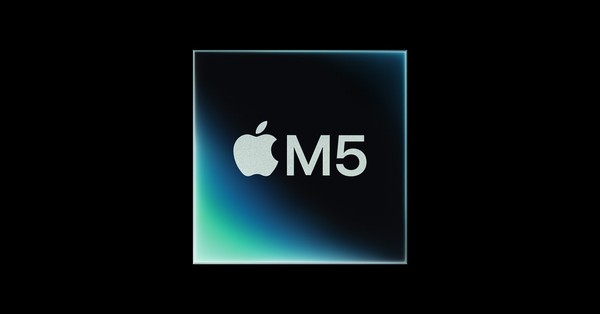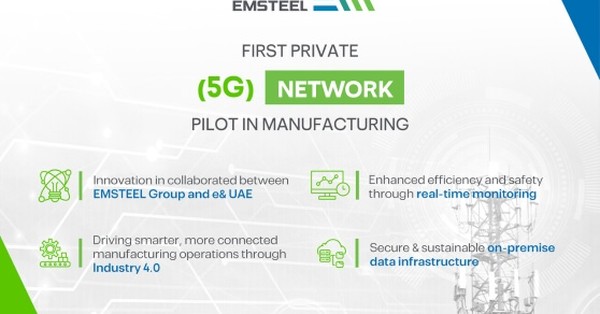Apple M5: On‑device AI performance for Mac, iPad, and Vision Pro
Apple’s new M5 chip is a material step in local AI compute that will ripple into enterprise IT, developer tooling, and edge networking strategies.
M5 specs: 3nm process, GPU Neural Accelerators, 153 GB/s memory
M5 is built on a third‑generation 3‑nanometer process and reworks Apple’s GPU as the center of gravity for AI. The 10‑core GPU adds a dedicated Neural Accelerator in every core, pushing peak GPU compute for AI to more than four times M4. Graphics also climb, with third‑generation ray tracing and a sizable uplift over the prior generation. On the CPU side, Apple pairs up to four performance cores with six efficiency cores and claims double‑digit gains in multithreaded throughput. The 16‑core Neural Engine returns with higher speed and better energy efficiency. Unified memory bandwidth jumps to 153 GB/s, and configurations with up to 32 GB allow more and larger models to remain entirely on device.
Why on‑device AI matters: latency, privacy, and cost
On‑device inference is moving from nice‑to‑have to default, driven by privacy, latency, and cost. M5’s per‑core Neural Accelerators and memory bandwidth make it practical to run diffusion models, large language models, and vision transformers locally on MacBook Pro, iPad Pro, and Vision Pro—without constant trips to the cloud. For enterprises, that reduces egress fees and unpredictable GPU spend. For telecoms and CDN providers, it changes traffic patterns at the edge by offloading AI processing to endpoints, lowering uplink pressure and shaving milliseconds where interactive latency is make‑or‑break.
Which devices and AI workloads benefit from M5
The first M5 systems span the 14‑inch MacBook Pro, iPad Pro, and Apple Vision Pro. Creative suites (e.g., Adobe Photoshop and Final Cut Pro) gain from higher graphics throughput and faster media engines. XR workloads on Vision Pro benefit from increased pixel rendering and higher refresh rates, translating into smoother, lower‑latency experiences. AI‑powered creation apps and local assistants tied to Apple Intelligence see snappier responses and can adopt larger context windows as memory bandwidth and capacity rise.
Apple Core ML and Metal 4 for GPU‑centric AI on M5
Apple’s platform work turns the hardware gains into developer‑visible performance without extensive rewrites.
Accelerate models with Core ML, MPS, and Metal 4 Tensor APIs
Applications using Core ML, Metal Performance Shaders, and Metal 4 should inherit M5 speedups automatically. The standout is GPU‑resident AI via the new Neural Accelerators: developers can target them through Tensor APIs in Metal 4 to push matrix ops and attention blocks directly onto the GPU pipeline. For teams with existing models, ONNX or PyTorch exports converted to Core ML can land on M5 with minimal refactoring, while keeping weights on unified memory for low‑copy execution.
Unified memory: larger on‑device LLMs and multimodal models
Apple’s unified memory lets CPU, GPU, and Neural Engine access one pool, reducing duplication and PCIe‑style bottlenecks. With 153 GB/s of bandwidth and configurations up to 32 GB, practitioners can run larger quantized LLMs and multimodal models fully on device. That’s consequential for privacy‑sensitive workflows in healthcare, finance, and field operations, and for offline or flaky‑network scenarios common in mobility and frontline environments.
Energy efficiency and TCO gains with on‑device AI
M5’s performance per watt directly impacts total cost of ownership. Longer battery life for mobile pros and lower datacenter reliance for inference both reduce operational emissions and recurring costs. For enterprises consolidating AI workloads onto employee devices, the power profile matters as much as raw TOPS.
How M5 stacks up vs. PC NPUs and edge ecosystems
M5 arrives amid a broader shift toward client‑side AI across PCs and XR, raising the bar on integrated AI subsystems and software tooling.
Apple’s GPU‑centric AI vs. Snapdragon X, Ryzen AI, and Intel
Rivals emphasize discrete NPUs: Qualcomm’s Snapdragon X series, AMD’s Ryzen AI, and Intel’s Lunar Lake each highlight escalating NPU TOPS. Apple takes a different path by embedding Neural Accelerators in every GPU core, then coordinating workloads across GPU, CPU, and Neural Engine via Apple frameworks. The practical question for buyers is not peak TOPS, but end‑to‑end latency, sustained throughput under thermal limits, and developer accessibility. With Metal/Core ML, Apple can surface those gains broadly across creative, productivity, and AI assistant use cases on day one.
Vision Pro: XR performance and edge networking impact
Vision Pro gains from M5’s graphics and AI pipeline. More pixels and higher refresh rates reduce motion blur, while on‑device AI handles tasks like scene understanding and persona generation. For telcos planning 5G advanced services, that means more compute sits in the headset, with the network focusing on synchronization, spatial anchoring, and content delivery. The result: lower round‑trip dependence and clearer delineation between device‑side inference and edge rendering or multiuser state sync.
Shifting traffic: local inference, RAG, and CDN/MEC planning
As more inference moves local, expect less inference‑related backhaul and more bursty, periodic updates for model syncing or telemetry. CDNs and MEC providers should plan for mixed workloads: client‑rendered AI plus server‑side retrieval‑augmented generation (RAG) and fine‑tuning pipelines. Enterprises will want policies that prefer on‑device inference for PII, falling back to edge or cloud for heavy multimodal jobs.
Next steps for developers, CIOs, and network teams
Now is the time to validate where on‑device AI belongs in your stack and how Apple’s M5 systems change your cost, latency, and privacy calculus.
Guidance for app developers and ISVs
- Benchmark real models, not micro‑kernels: test target LLMs and diffusion workloads across Core ML and Metal 4 Tensor APIs, including quantized variants.
- Exploit unified memory: minimize copies, keep weights resident, and profile memory pressure at 16 GB vs. 32 GB.
- Offer offline‑first modes on Apple devices, with graceful degradation and privacy‑preserving defaults.
Actions for CIOs, CTOs, and network strategists
- Rebalance AI placement: push inference to M5‑class endpoints; reserve edge/cloud for training, RAG retrieval, and collaboration sessions.
- Update security posture: treat on‑device models as sensitive assets; manage versioning, attest device health, and enforce data governance.
- Model TCO: compare per‑employee device inference vs. cloud GPU OPEX over a year, including egress and energy costs.
Key risks, trade‑offs, and open questions
- Portability: Apple’s APIs deliver performance, but cross‑platform parity remains work; maintain an ONNX path and keep kernels modular.
- Thermal ceilings: sustained performance under heavy AI plus graphics loads will vary by chassis and workload mix.
- Supply and lifecycle: plan refresh cycles and procurement around M5 availability windows and memory configurations.
Bottom line: M5’s GPU‑centric AI design, faster Neural Engine, and higher memory bandwidth make on‑device AI a default choice on Apple hardware—enterprises and telcos that adapt placement, tooling, and policies now will capture lower latency, better privacy, and measurable cost savings.








































